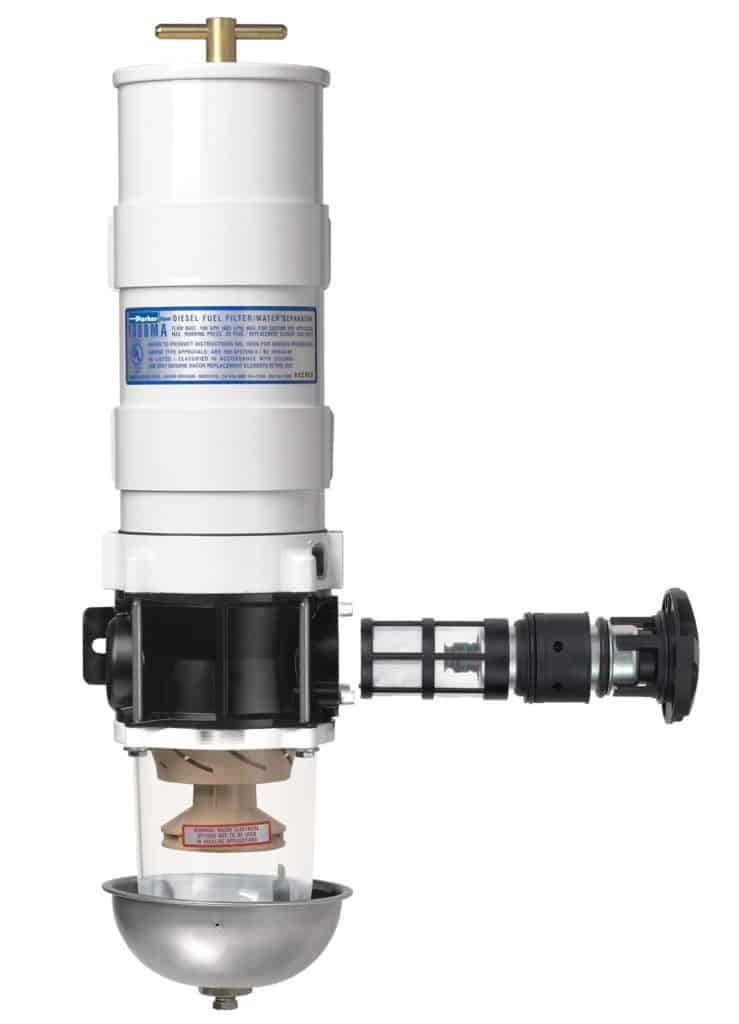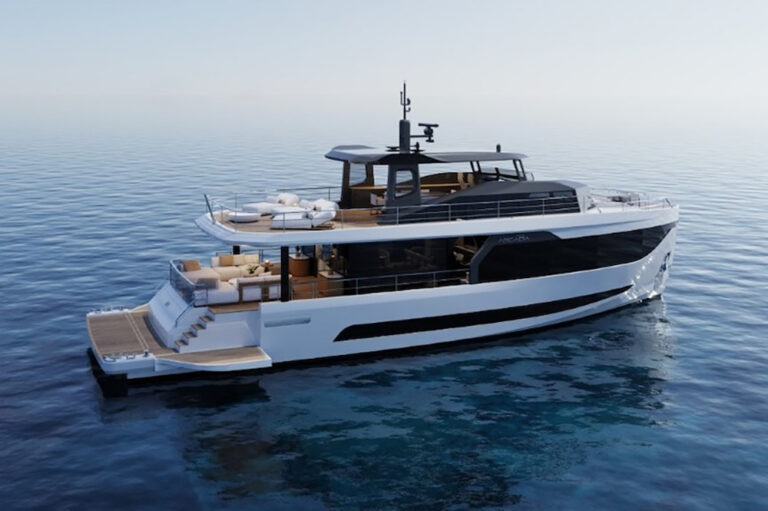
Hustle and Flow
In years past, good boat owners took fuel management to mean choosing a reputable fuel dock and treating any problems that arose. Engines today are much less tolerant of common fuel problems, so owners have to be proactive and head off potential problems before symptoms show. A three-part strategy is best: Be selective about what goes into diesel tanks, monitor conditions within tanks and filters to prevent problems or catch them early, and use additives appropriately.
“Because of [emissions requirements], we’re finding fuel systems with higher pressures that demand higher-quality fuel,” says Bill (Doc) McComiskey, a fuel specialist at Florida Detroit Diesel in Orlando, Florida (fdda.com). “We can no longer just put fuel in the tank, head offshore, and assume it will take care of itself.” In his 25 years with Florida Detroit Diesel, McComiskey has seen primary filtration — the first filters after the tank that remove heavy contamination and water — have its tolerances drop from 30 microns to as little as 10 microns to stay within engine manufacturer’s warranty specifications. Secondary filters — those mounted on the engine that remove any tiny particles just before fuel reaches expensive diesel-injection components — have dropped from around 8 microns to as little as 2 microns.
The good news is that many fuel docks have stepped up and seem to be better at maintaining their tanks and filters. Still, to be on the safe side, purchase fuel from a marina that does a lot of business — diesel fuel problems crop up when it sits. But also avoid filling up right after the fuel dock has taken a delivery, which can stir water and debris normally settled harmlessly in tank bottoms. Fuel-dock pumps operating more slowly than ususal are warning the user that filters need to be changed. While external filter funnels like the Racor Fuel Filter Funnel (parker.com) aren’t practical for fueling the several hundred gallons needed on even small yachts, they make a good spot check. Test the first two or three gallons from the pump. “[The filter funnel] won’t let water or big particles through,” McComiskey says. “If it doesn’t drain well, go somewhere else for fuel.”
Even with clean fuel coming in, problems can grow inside a boat’s tanks. Mold, yeast, fungus and bacteria breed where diesel fuel and water meet. “They’re living organisms,” McComiskey says. “Anything that lives makes waste. That waste is the black stuff we call algae.” The fix? Monitor filters for telltale signs of algae or water regularly by shining a flashlight through the clear bowl at the bottom of primary filters. Marine diesel fuel should be golden or reddish and crystal clear. A few clumps of debris in the bottom of the filter bowl is normal, but never more than a quarter of the way up the bowl. A milky mix or a distinct line with clear liquid below marks water in the fuel, which diesel engines simply won’t tolerate.
Most filter elements corral water, but as they become clogged fuel velocity increases in the remaining open passages, potentially drawing water past filter media designed to stop it. This makes prompt filter changes critical. To monitor filters, Racor offers a simple vacuum gauge that replaces the T-handle on top of their filters. Another option: hard-plumbed, panel-mounted gauges that offer the same protection in a more finished look. Either way, they must be checked regularly while the boat is running at cruise rpm and monitored for increased vacuum that indicates fouled filters.
If dirty fuel is suspected the safest course is to have it “polished” by circulating it through external filters. For badly fouled tanks, call in a pro. More and more boats, however, are installing onboard polishing systems capable of removing moderate contamination and ideal for maintaining clean tanks. McComiskey says polishing systems that turn the tank over in three or four hours are ideal, such as those made by Algae-X (algae-x.net) and Reverso (reversopumps.com). He suggests cleaning tanks just after a boat ride or right after taking fuel aboard to catch debris stirred off tank bottoms.
Other polishing systems circulate just a small amount of fuel over a longer time, such as Walker Engineering’s AlgaeSep (walkerairsep.com). Either way, look for a system that can operate itself periodically if the boat sits unused for prolonged time.
Often polishers are plumbed into existing engine-pickup and return lines, but a dedicated pickup tube often reaches deeper into the tank. Avoid using generator pickups for this job, since they often don’t go as deeply into the tank — an intentional design that warns when tanks are near empty while leaving a small reserve for main engines.
In decades past, diesel fuel didn’t require much in the way of additives — at most a biocide to kill microbes or prevent them during long-term storage. But low-sulfur fuel introduced in 1994 and ultra-low-sulfur fuel that arrived in 2006 changed that. The refining process that decreases sulfur also reduces fuel’s lubricity, causing accelerated wear in components ranging from injectorpump barrels and plungers to exhaust valve seats. Engines built after 1994 employ hardened parts to mitigate wear, but adding lubricity back to fuel benefits all engines.
Problems don’t end there either. “Ultra-low-sulfur fuel is a sweeter food for microbes,” says Fred Ruhland, vice president of technology for ValvTect (www.valvtect.com). Some states mandate or encourage mixing biodiesel into the fuel supply as well. “Then you have an even sweeter food,” Ruhland continued. “Biocide becomes not just an option [to treat symptoms], but more of a normal maintenance additive.”
ValvTect recently introduced marine diesel additive with micro-biocide, which adds lubricity and a small dose of biocide to diesel tanks as well as surfactants to prevent injector deposits, antioxidants to keep fuel from breaking down and forming sediment, cetane boosters to help engines run cleaner and smoother, and dispersants to control moisture inherently present in fuel. While seldom a problem aboard yachts, diesels running in very cold weather also benefit from additives designed to prevent fuel from waxing or gelling, such as ValvTect’s Diesel Guard antigel and deicer, and significant microbe problems should be treated with an extra dose of biocide, like ValvTect’s BioGuard fuel micro-biocide.
“Biocides are poison — they’re a last resort,” McComiskey warns. “Once you poison the tank, you have to filter it to manage the debris. If you don’t enjoy changing fuel filters, head off problems before you need those chemicals.”
Additives will help maintain fuel quality in combination with consistent equipment checks and careful diesel shopping. And your engines will thank you for those efforts with reliable performance.








